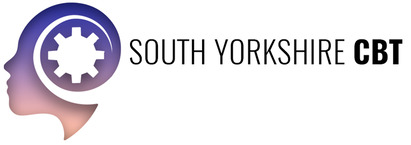Post-traumatic Stress Disorder (PTSD)
What is PTSD?
PTSD is an anxiety disorder caused by very stressful, frightening or distressing events. Someone with PTSD often relives the traumatic event through nightmares and flashbacks, and may experience feelings of isolation, irritability and guilt. They may also have problems sleeping, such as insomnia, and find concentrating difficult. These symptoms are often severe and persistent enough to have a significant impact on the person’s day-to-day life.
Symptoms of PTSD
The specific symptoms of PTSD can vary widely between individuals, but generally fall into the categories described below;
- Nightmares
- Re-experiencing is the most typical symptom of PTSD. This is when a person involuntarily and vividly re-lives the traumatic event in the form of:
- repetitive and distressing images
- physical sensations – such as pain, sweating, nausea or trembling
- Flashbacks
Some people have persistent negative thoughts about their experience, overthinking and ruminating by repeatedly asking themselves questions that prevent them from coming to terms with the event. For example, they may wonder why the event happened to them and if they could have done anything to stop it, which can lead to feelings of guilt or shame.

Emotional numbing and avoidance
Some people attempt to deal with their feelings by trying not to feel anything at all. This is known as emotional numbing. This can lead to the person becoming isolated and withdrawn, and they may also give up pursuing activities they used to enjoy. Trying to avoid being reminded of the traumatic event is another key symptom of PTSD. This usually means avoiding certain people or places that remind you of the trauma, or avoiding talking to anyone about your experience. Many people with PTSD try to push memories of the event out of their mind, often distracting themselves with work or hobbies.
‘Feeling on edge’ or Hyperarousal.
Individuals with PTSD may experience high anxiety and find it difficult to relax. They may be constantly aware of threats and easily startled. This state of mind is known as hyperarousal.
Hyperarousal can lead to:
- difficulty concentrating
- angry outbursts
- sleeping problems
- irritability
- Other issues
Many people with PTSD also have a number of other problems, including:
- depression, anxiety or phobias
- self-harming or destructive behaviour– such as substance misuse.
- other physical symptoms – such as dizziness, chest pains and headaches and stomach ache.
- PTSD sometimes leads to work-related problems and the breakdown of relationships.
Treatment for PTSD
The main treatments for post-traumatic stress disorder (PTSD) are psychotherapy and medication.
Traumatic events can be very difficult to come to terms with, but confronting your feelings and seeking professional help is often the only way of effectively treating PTSD. It’s possible for PTSD to be successfully treated many years after the traumatic event occurred, which means it’s never too late to seek help.
Assessment
Before having treatment for PTSD, a detailed assessment of your symptoms will be carried out to ensure treatment is tailored to your individual needs.
What to expect from Cognitive Behavioural Therapy for PTSD
Cognitive behavioural therapy (CBT) is a type of therapy that aims to help you by changing how you think and act.
Trauma-focused CBT uses a range of psychological treatment techniques to help you come to terms with the traumatic event.
For example, therapy may support you to confront your traumatic memories by thinking about your experience in detail. During this process your therapist helps you cope with any distress you feel, while identifying any unhelpful thoughts or misrepresentations you have about the experience.
Your therapist can help you gain control of your fear and distress by changing the negative way you think about your experience. For example, feeling you’re to blame for what happened or fear that it may happen again.
You may also be encouraged to gradually restart any activities you’ve avoided since your experience, such as driving a car if you had an accident.
You’ll usually have 8-12 weekly sessions of trauma-focused CBT, although fewer may be needed. Sessions usually last for around 60-90 minutes.
Eye movement desensitisation and reprocessing (EMDR)
EMDR is a relatively new treatment which has been found to reduce the symptoms of PTSD.
It involves making side-to-side eye movements, usually by following the movement of your therapist’s finger, while recalling the traumatic incident. Other methods may include the therapist tapping their finger or playing a tone.
The theory around how EMDR works is unclear but it may help you to change the negative way you think about a traumatic experience.
Complex PTSD
Complex PTSD may be diagnosed in adults or children who have repeatedly experienced traumatic events, such as violence, neglect or abuse.
Complex PTSD is thought to be more severe if:
- the traumatic events happened early in life
- the trauma was caused by a parent or carer
- the person experienced the trauma for a long time
- the person was alone during the trauma
- there is still contact with the person responsible for the trauma
As it may take years for the symptoms of complex PTSD to be recognised,a child’s development, including their behaviour and self-confidence, can be altered as they get older.
Adults with complex PTSD may lose their trust in people and feel separated from others.
Symptoms of complex trauma or PTSD
The symptoms of complex PTSD are similar to non complex PTSD but may include:
- feelings of shame or guilt
- periods of losing attention and concentration – this is known as dissociation
- physical symptoms – such as headaches, dizziness, chest pains and stomach aches
- Isolating yourself off from friends and family
- relationship difficulties
- Difficulties controlling emotions
- destructive or risky behaviour – such as self-harm and substance misuse.
- Suicidal ideation and/ or intention.
CBT for complex PTSD.
One of the key symptoms of complex PTSD is losing trust in people. If possible, people with complex PTSD are recommended to slowly start doing regular activities such as:
- finding friends
- getting a job
- regular exercise
- taking on hobbies
It’s important to try and develop some feelings of trust. It may take some time, but a trusting relationship with a therapist will help treat complex PTSD.
Treatment may be given in three stages, described below.</p?
Stabalization
One of the first steps in treating complex PTSD may involve speaking with a therapist to learn how to control feelings of distrust and lose the feeling of being ‘disconnected’ from friends and family.
Certain techniques, known as ‘grounding’ techniques, may be able to help you separate an abusive or traumatic past from the present. The aim is to make the past seem less frightening and reduce the amount of flashbacks you experience.
With time, you can begin to experience less anxiety and learn to cope with daily life.
Trauma-focused therapy
Trauma Focused Therapy may include:
- Cognitive behavioural therapy (CBT)
- EMDR
These treatments may help you to control any distressing thoughts but must be approached carefully to avoid making the situation worse.
Re engage with life
The final stage is to begin to use these skills and techniques to develop better relationships with other people.
Also engage with previously enjoyed activities that you may have avoided due to difficulties managing emotions.


